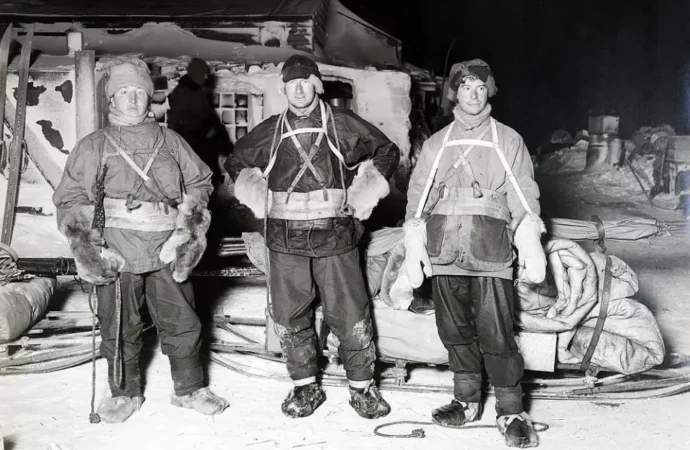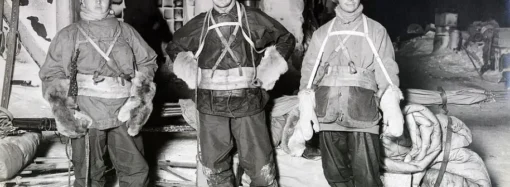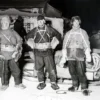One hundred and thirteen years ago, cars were not yet widespread. Airplanes were made of canvas and wood. Sir Edmund Hillary was still 40 years away from summiting Mount Everest. It was during this time that explorers began focusing on reaching the North and South Poles.
The most famous story of polar exploration is that of Ernest Shackleton, whose ship, the Endurance, became trapped in ice. Less known is the story of Robert Falcon Scott, who led a group of five to the South Pole in January 1912, only to find the Norwegian flag already planted there. Heartbroken, they died in a blizzard on the way back.
Still less well known is the expedition made by three members of Scott’s team to Cape Crozier, 60 miles away from their base camp. One of the members was a young man named Apsley Cherry-Garrard, an assistant zoologist in Scott’s party. He wrote about the experience in “The Worst Journey in the World.”
Cherry-Garrard and two other men undertook the “Winter Journey” for the sake of scientific research, wanting to collect some unhatched eggs from the emperor penguin so they could study the embryos inside. But emperor penguins lay their eggs in isolated parts of Antarctica in mid-winter, so the zoologists had to travel during the darkest, coldest months of the year in gale-force winds and temperatures that dropped to more than 70 below.
Even with thick clothes and a fuel-powered stove, the cold was excruciating. Sweat froze in their clothes and sleeping bags and turned them into armor. Their breath froze in front of their faces, creating a solid wall of ice across their mouths. One morning, “I raised my head to look round and found I could not move it back,” Cherry-Garrard said. “My clothing had frozen hard as I stood—perhaps fifteen seconds. For four hours I had to pull with my head stuck up, and from that time we all took care to bend down into a pulling position before being frozen in….”
Eventually, they reached the penguin rookery and secured three eggs. But their discomfort on the journey there was nothing compared to the horrors of the journey home. Their tent was snatched away in a blizzard, and during the remainder of the days-long storm, they huddled in sleeping bags under a blanket of snow, singing all the songs and hymns they knew. Finally, they dug their way out and, miraculously, found the tent lying on the ice less than a mile away. They trudged back to the main camp with the penguin eggs in tow, successful but barely alive.
People have written books about Scott’s polar expedition, trying to understand why he never made it back. Was it poor leadership? Miscalculated resources? Failure of his men to follow orders? It’s particularly strange that Scott, a leader of men, died in the wilderness in a summer storm, while three scientists made it alive through the dead of winter. Granted, they had a shorter journey, but their conditions were much worse. How did they survive when the leader of the expedition didn’t?
It’s revealing that Scott never actually attained his goal. He reached the South Pole, but he wasn’t the first to do so. The idea that drove him to the extremes of human endurance vanished the moment he saw the Norwegian flag in the distance. By contrast, Cherry-Garrard and his companions were successful. The eggs they brought back were given to London’s Natural History Museum and provided a basis for scientific study.
Can an idea keep you alive? It depends on the kind of person you are. These Antarctic explorers were the kind of men who sang hymns during a blizzard, who kept their tempers and their manners when their nerves were pushed to the breaking point. During the long winter months at the main camp, when there was little to do besides think about the journeys planned for the spring, they would entertain each other with songs and stories and give lectures about various topics about which they had some expertise. With cold death waiting just outside the door, these men ate and sang and celebrated. They were not in the Antarctic for money or fame. They were there because they loved the world and wanted to learn as much about it as they could before they died. In the preface to his book, Cherry-Garrard points back to the time
…when we were artistic Christians, doing our jobs as well as we were able just because we wished to do them well, helping one another with all our strength, and (I speak with personal humility) living a life of co-operation, in the face of hardships and dangers, which has seldom been surpassed.
So, would you survive the Antarctic? Are you the kind of person who sees value in learning and doing for their own sake? Would you keep saying “please” and “thank you” if you thought the meal you were eating would be your last?
Most of us will never travel to the Antarctic – and none of us will travel in the year 1912 – but we don’t have to surround ourselves with snow and ice to experience death at close quarters. Every moment of every day, you may be on the point of dying. If anything is worth doing at any time, it is worth doing under the most extreme circumstances. The example of the men in Scott’s expedition shows that science, songs, and manners matter when your tent is gone and the temperature is 70 below. If they matter then, they matter now – after all, you do not know what the day may bring forth.
—
This article was made possible by The Fred & Rheta Skelton Center for Cultural Renewal.
















Leave a Comment
Your email address will not be published. Required fields are marked with *